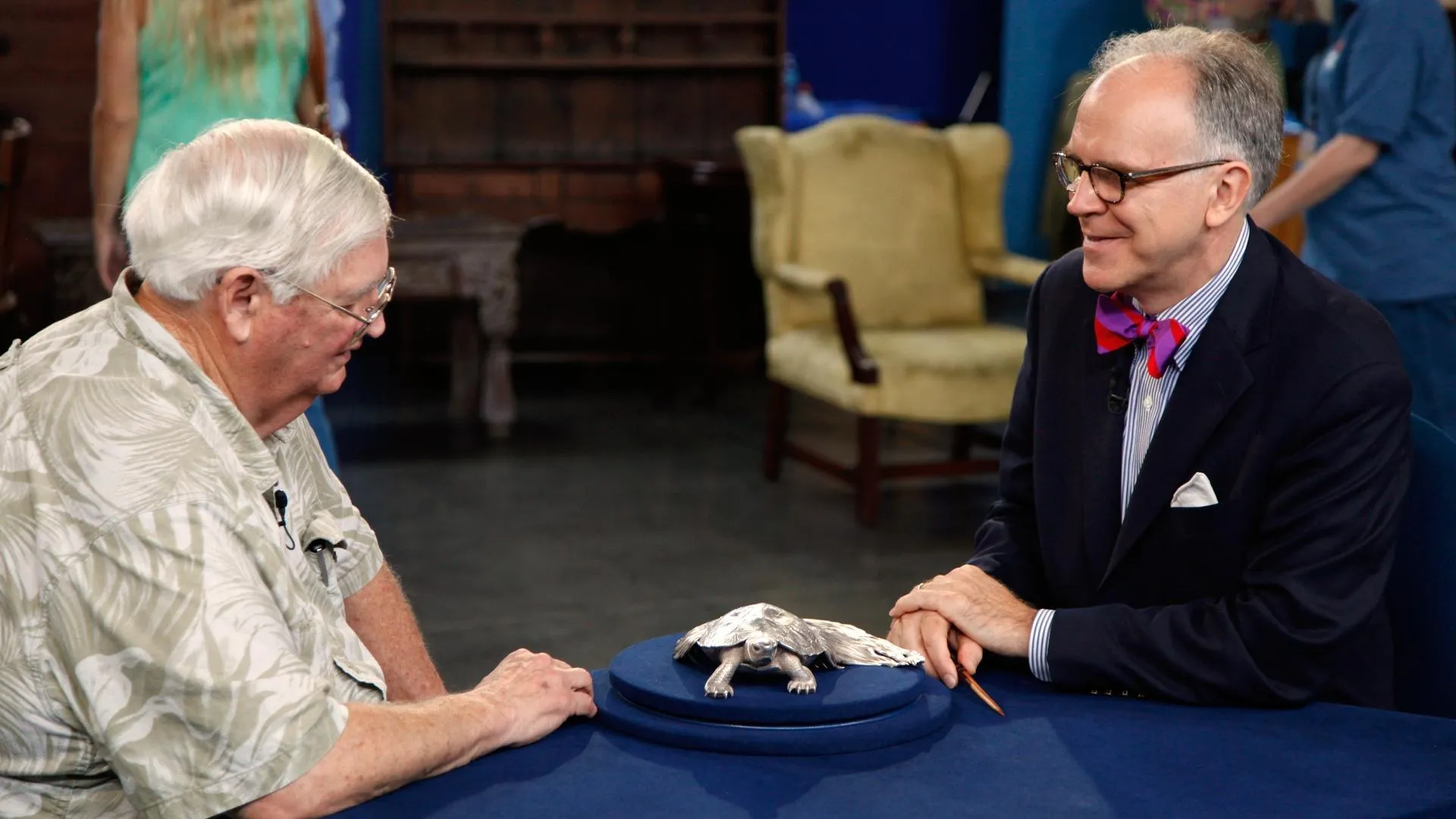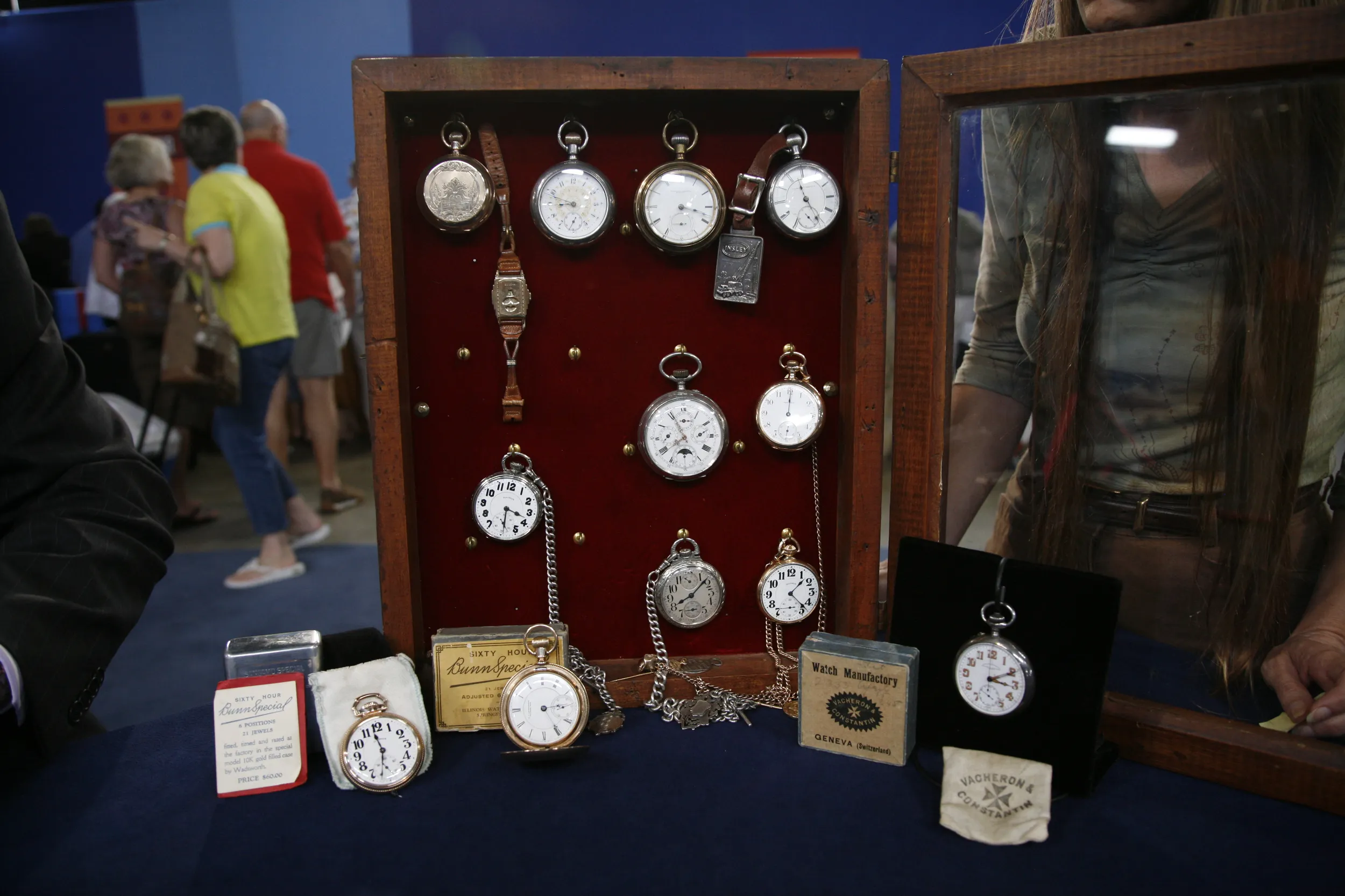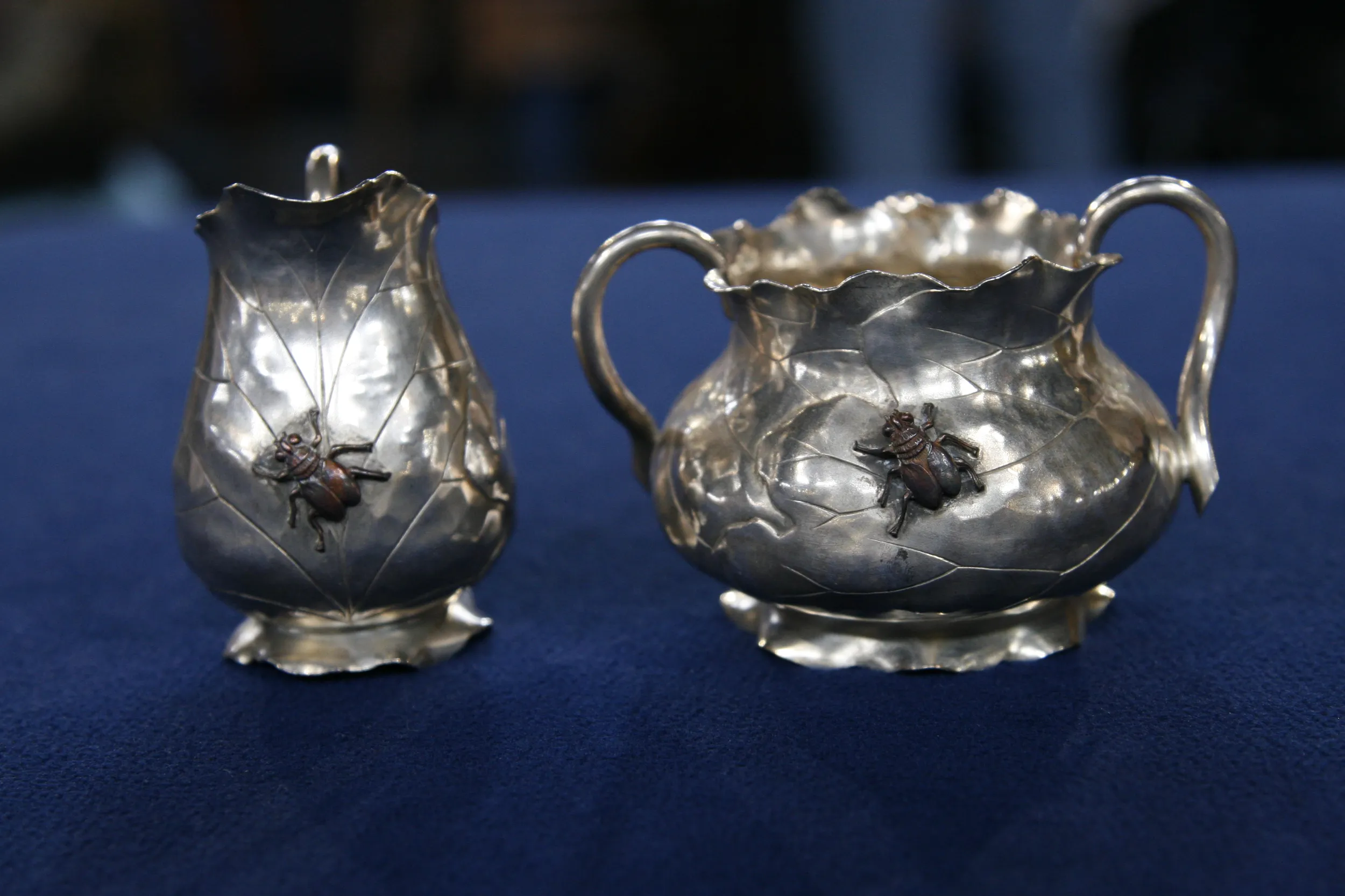GUEST: I got the clock from my daughter's great-grandmother. I've had it for ten years, and I knew they had purchased it back in around 1970 at a private auction. She knew I liked it, and so I got the clock from her.
APPRAISER: And you did some trading to acquire it?
GUEST: Yes, sir. Helped her and helped me at the time.
APPRAISER: Well, let's take a look at the clock. Let's start with the dial here. It's got this nice gold bezel and silver chapter ring. And in the center, we have the name, "Goldsmiths' Alliance Limited, 11 & 12 Cornhill, London," and then a production number below that. This firm has an excellent history. They were formed in 1751, and they advertised that they made the finest clocks and watches of the day. They were in business for about 200 years. And there's a famous clock at the Waldorf Astoria Hotel in New York in the lobby made by this firm for the Chicago World's Fair in 1893. I don't believe that they made this, though. Their name is on the dial, but they were also retailers. Every other example of this form that I've seen before was made in France. So I believe this was a French clock that was marketed by them. Now, clocks of this style were very popular in the 1870s and '80s, and they're very common. We'll probably see about a dozen clocks of this general form at Antiques Roadshow today. The difference is that this one is so much better than the rest. It's much higher quality. This is a real bronze sculpture, wonderful marble case. If we look at the sculpture itself, it has this eagle clutching a snake. The detail is just spectacular. And we have this garland that flows down, again, made of bronze. And if we flip it around to the back, we see it has an eight-day brass movement with a pendulum. It needs some work to get it going, but that would be easy for a clockmaker to do. And this bezel used to have glass in it. Again, not a difficult thing to replace. And it would clean up beautifully. The marble in the case would polish up nicely. It's very dirty right now, so we're not seeing a lot of the detail. This should be very carefully cleaned so as not to destroy the patina. Do you have any idea of what the clock might be worth?
GUEST: No, sir. I just know the story behind it. It was made for Maximilian.
APPRAISER: So you were told that the clock was made for Maximilian of Mexico.
GUEST: Yes, sir.
APPRAISER: Okay, we often hear stories about who owned something or who it was made for. Sometimes it's true, very often it's not. In this instance, I don't believe that's true because this clock dates from the 1870s or '80s. Maximilian died in 1867, so I don't believe that he owned it. But that doesn't take anything away from the fact that it's a really terrific clock.
GUEST: Yes, sir.
APPRAISER: In your trade, about how much do you think you have into the clock?
GUEST: Maybe $800.
APPRAISER: Of the clocks that we will see today, most of them that are of this general form we appraised for in the vicinity of $300 to maybe $600 or $700. But this is a clock that in a retail gallery, I could easily see it priced at $5,000 to $7,000.
GUEST: Cool. I'm happy with that.











